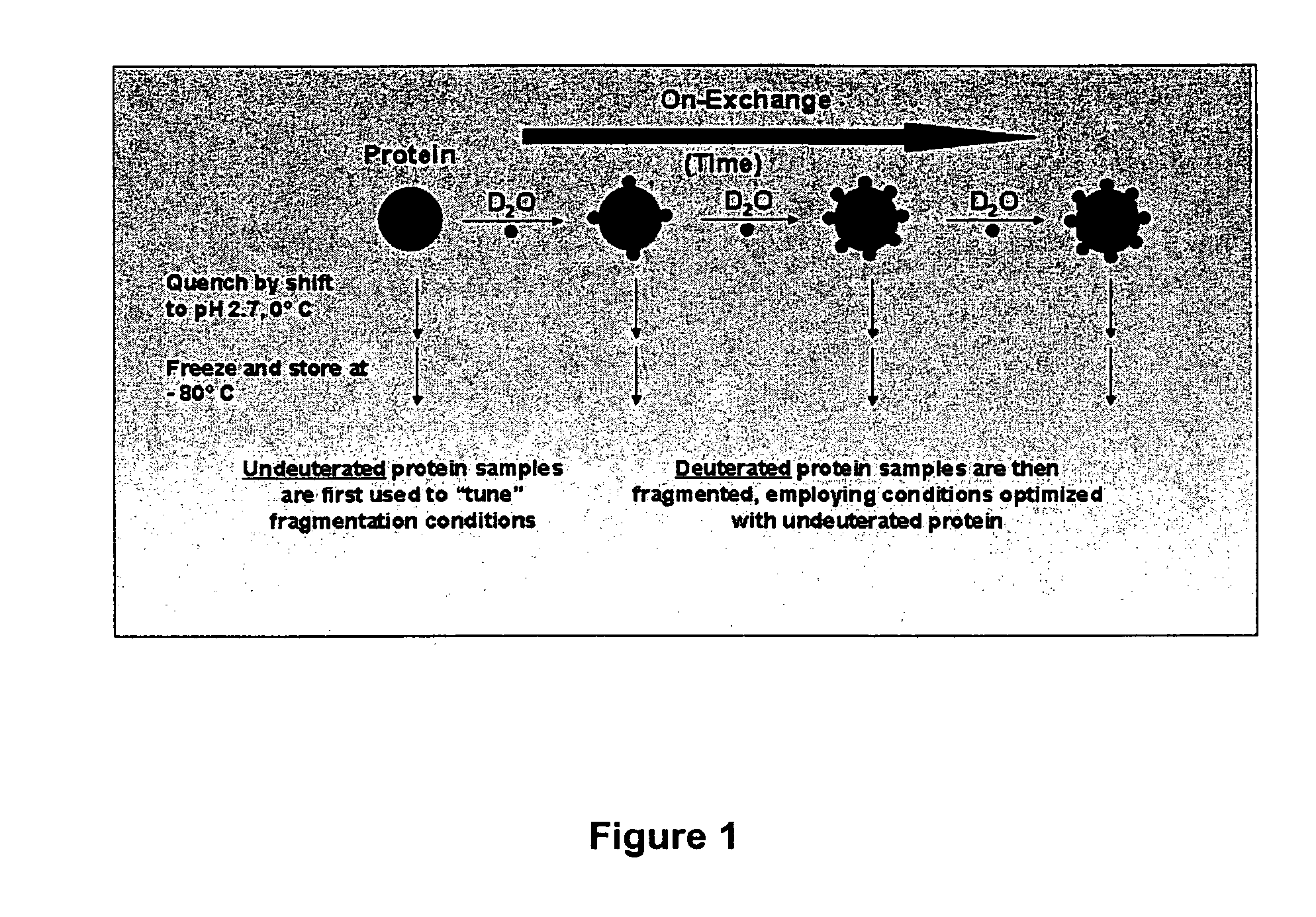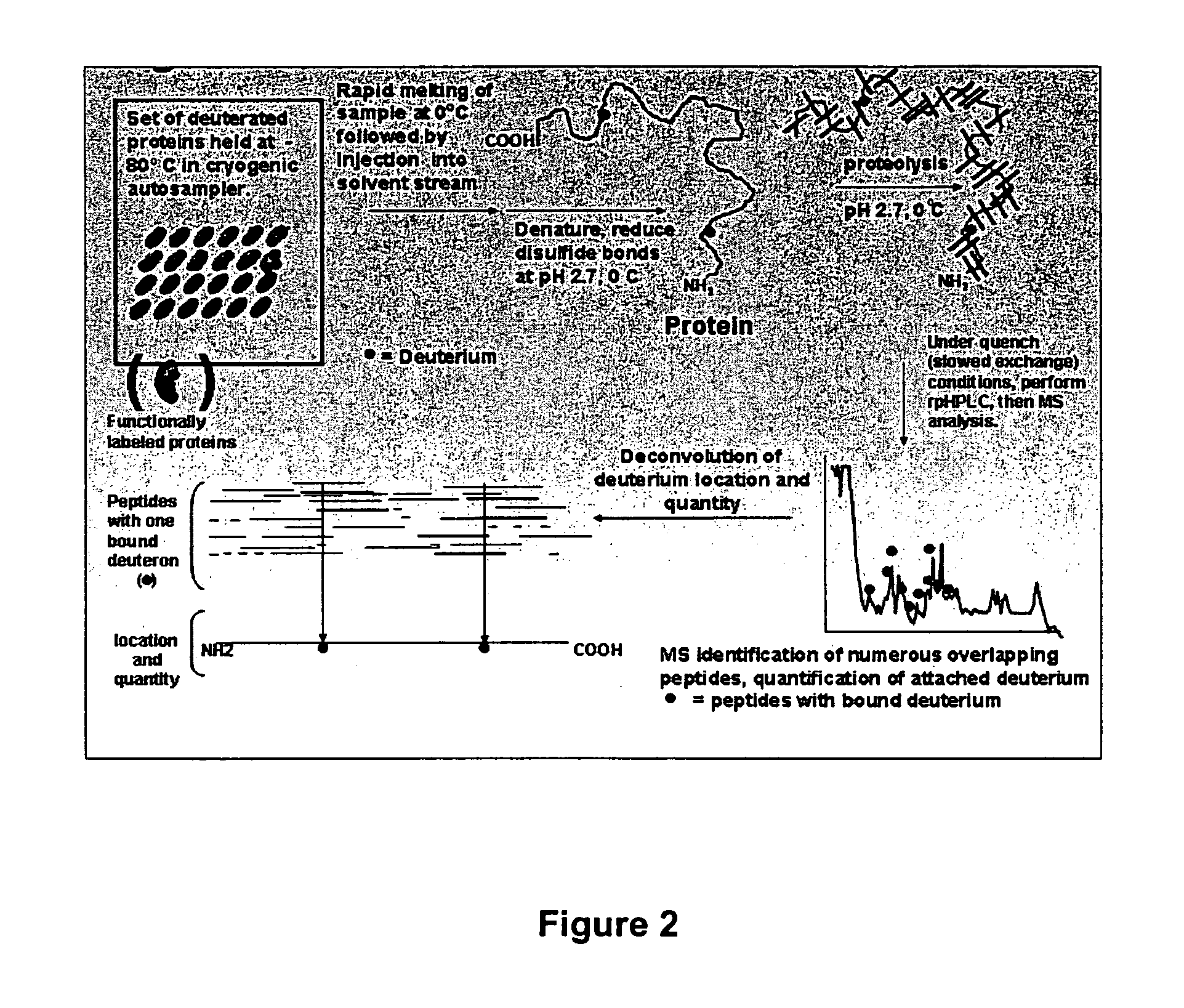Enhanced methods for crystallographic structure determination employing hydrogen exchange analysis
a technology of hydrogen exchange and crystallography, applied in chemical methods analysis, instruments, peptides, etc., can solve the problems of promoting sample heterogeneity, unable to achieve the speed required for ht efforts, and unable to achieve general and robust methods to effect stabilization. , to achieve the effect of simplifying the protein fragmentation method
- Summary
- Abstract
- Description
- Claims
- Application Information
AI Technical Summary
Benefits of technology
Problems solved by technology
Method used
Image
Examples
example 1
Rapid Refinement of Crystallographic Protein Construct Definition Employing Enhanced Hydrogen / Deuterium Exchange Mass Spectrometry (DXMS)
Introduction
[0248]It is widely anticipated that access to high-resolution protein structures will be facilitated by novel high-throughput improvements to conventional crystallographic methods. Proteome-wide crystallography is one avenue being pursued by several groups, including the Joint Center for Structural Genomics (JCSG) (Lesley, et al. Proc Natl Acad Sci USA 99:11664-9. 2002, Stevens, et al. Science 293:519-520 2001, Stevens, et al. Science 294:89-92 2001). These efforts have benefited greatly from recent technology enhancements in protein expression and crystallization. Despite these enhancements, production of stable proteins that produce suitable crystals continues to be a serious bottleneck. Many generally well-structured proteins contain disordered regions that may serve as passive linkers between structurally autonomous domains, or beco...
example 2
Stability of a Two Repeat Fragment of Chicken Brain α-Spectrin Probed at High Resolution by Enhanced Hydrogen / Deuterium Exchange Mass Spectrometry (DXMS): Implications for the Molecular Mechanisms of Spectrin Elasticity
[0274]Spectrin is a cytoskeletal protein involved in maintaining structural support and membrane elasticity. It includes an α-monomer of 21 tandem repeats, with each repeat composed of three well-formed, long antiparallel α-helices connected by short turns or loops, forming a “z”-shaped three-helix bundle (Grum, et al. Cell 98:523-35. 1999). It functions, in part, as an elastic molecule, demonstrating a distinctive “sawtoothed” compliance behavior, where tension remains within a relatively narrow range despite considerable lengthening. To better understand the molecular basis of this behavior, the structural stability of α-spectrin is determined herein, at near-individual amino acid scale, with enhanced methods of peptide amide hydrogen-deuterium exchange-mass spectro...
PUM
| Property | Measurement | Unit |
|---|---|---|
| time | aaaaa | aaaaa |
| pH | aaaaa | aaaaa |
| cold temperature | aaaaa | aaaaa |
Abstract
Description
Claims
Application Information
 Login to View More
Login to View More - R&D
- Intellectual Property
- Life Sciences
- Materials
- Tech Scout
- Unparalleled Data Quality
- Higher Quality Content
- 60% Fewer Hallucinations
Browse by: Latest US Patents, China's latest patents, Technical Efficacy Thesaurus, Application Domain, Technology Topic, Popular Technical Reports.
© 2025 PatSnap. All rights reserved.Legal|Privacy policy|Modern Slavery Act Transparency Statement|Sitemap|About US| Contact US: help@patsnap.com



